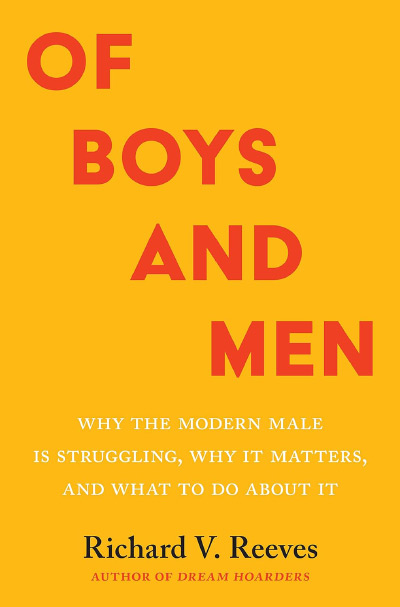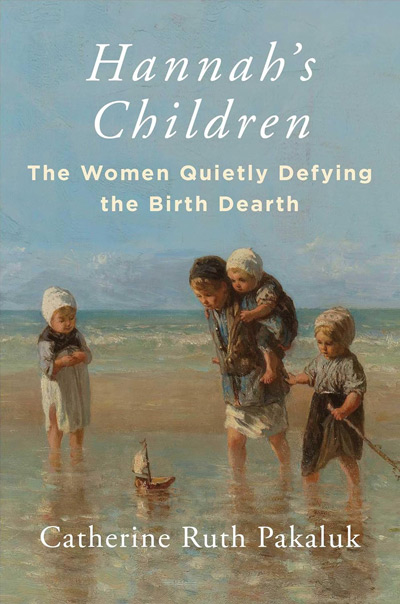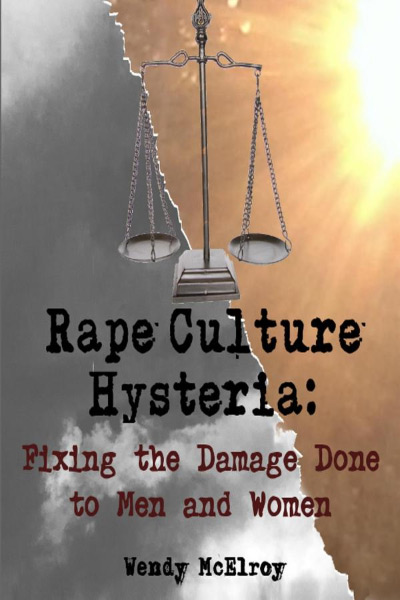Last semester I quizzed my students on The Two-Parent Privilege by Melissa Kearney. I asked: “Among young adults between 24 and 35 (born between 1984 and 1995) 41% of women have graduated from college and ____ of men have graduated from college.” The choices were a. 33%, b. 39%, c. 43%, and d. 49%. Although they had all read the book and did very well on the other quiz questions, everyone got the answer wrong. Choice c. was the most popular answer, but the fact is that only 33% of these men have graduated from college. As this anecdote demonstrates, today’s men are falling behind women in some important ways and few seem to recognize it.
Richard Reeves, the author of Dream Hoarders, shows that this educational gap is only a small part of the struggles of many men today. He seeks to diagnose the problem and offer policy solutions, some of which may be worth trying. Along the way, he provides a wide range of important facts and a large dose of cultural analysis, some of which is misguided.
The male-female educational gap starts early. “Girls are 14 percentage points more likely than boys to be ‘school ready’ at age 5 ... controlling for parental characteristics” (p. 5). This is much wider than the gap between rich and poor children, or between white and black children. “Black girls are more likely than white boys to have graduated from high school; young black women aged 18 to 24 are more likely than young white men to be enrolled in college; and a higher proportion of black women aged 25 to 29 hold postgraduate degrees than white men of the same age” (p. 50).
It’s not just that men are lagging in education. As Reeves documents, men account for 75 percent of “deaths of despair” by suicide or overdose. A 2021 White House announcement declared the COVID pandemic to be a crisis that “magnified the challenges that women and girls ... have long faced,” ignoring the fact that—according to the Centers for Disease Control’s statistics—total COVID deaths among men were 19 percent higher than among women in the previous year and 28 percent higher in 2021. In addition, the labor force participation rate among prime-aged men in the U.S. has dropped by 6 percentage points in the last fifty years. And, as Reeves amply describes, fathers are increasingly separated from their children.
Like Kearney, Reeves was “advised against” (p. ix) writing this book, because it goes against many of the orthodoxies of his peers on the left. In fact, he castigates the left for being in “denial” about problems facing men, beginning with an incident at his sons’ school, in which a boy created a list of his female classmates, ranked in terms of their attractiveness. A protest ensued when a girl saw the list on another boy’s computer, large meetings were held, the boy was forced to publicly apologize, and a panel discussion aired on C-SPAN. Reeves argues that this incident “highlights the first of four major failings of the political Left on issues related to boys and men, which is a tendency to pathologize naturally occurring aspects of masculine identity, usually under the banner of toxic masculinity. The second progressive flaw is individualism; male problems are seen as the results of individual failings of one kind or another, rather than of structural challenges. Third is an unwillingness to acknowledge any biological basis for sex differences. Fourth is a fixed conviction that gender inequality can only run one way, that is, to the disadvantage of women” (p. 106). The left fears that talking about boys’ and men’s problems will hurt girls and women.
Reeves castigates the right, as well, for wanting to “turn back the clock” (p. 117). This desire is belied by a closer look at a statistic from a Pew survey that he later reports—only 18 percent of Americans agree with the statement that “women should return to their traditional roles in society.” In fact, as Caroline Carlson shows, the share who completely agree with this statement had fallen below five percent for both men and women by 2012 and the partisan difference is very small. Given the trend, the rate is likely to be even smaller today. Reeves rails at the fact that a third of men of all political persuasions believe that they are discriminated against. “This is false,” he asserts. “While the problems of boys and men are real, they are the result of structural changes in the economy and broader culture, and the failing of our education system, rather than of any deliberate discrimination” (p. 120). But don’t progressives see such structurally created problems as the core of modern discrimination? Instead, the evidence that he presents is likely to convince some readers that some of the disadvantages that boys face are deliberate. Those running the schools are, after all, mostly women and they don’t seem to understand or sympathize with boys the way earlier generations of schoolteachers and administrators did.
I am particularly unsympathetic when he says that we need “to establish a new basis for fatherhood” (p. 38) to replace the old idea that young adults’ fathers and grandfathers followed: “work, wife, kids” (p. 36). He contends that “men need to escape the confines of the breadwinner model of fatherhood” (p. 41) and become more focused on direct relationships with children (as if this wasn’t part of the old model). After my fiancé (now wife) agreed to marry me, she told me that I needed to ask her father’s permission. When I did, he nodded his head and said, “Are you going to support her?” At first I took this to imply emotional support, but it quickly dawned on me that he meant financial support. I replied, “H**l, no! That’s the government’s job!” I had read Reeve’s book (forty years before it was published), which says that “governments increasingly see their role as supporting women raising children, in part so that they are not trapped in a dependent relationship with a man” (p. 35). I didn’t want her to be trapped! Of course, this isn’t what I actually said. I agreed that I would support her and have followed through on the promise. Most men aspire to this. Why should we dissuade them? Reeves (quoting Barrett Swanson) warns of a “Gnawing sense of purposelessness” (p. 63) in men’s lives, as their role as breadwinner has ebbed and traditional mores have disappeared. This is understandable. Being a supportive father and husband is a pretty powerful (and wonderful) purpose. The left tore up the old script: “You don’t need both a mom and a dad. A fish doesn’t need a bicycle!” The new script appears to be an absurdist jumble and Reeves’s ideas simply don’t offer men much purpose. He's implicitly unfriendly to religion, the traditional source of purpose, as well. “It’s better to give than to receive” has given men and women a higher purpose for millennia. Modern nihilism is no substitute.
Reeves’s chief policy suggestion has caused a bit of a stir in educational circle. He argues that boys are at a disadvantage in school primarily because they develop neurologically more slowly than girls. “The key point is that the relationship between chronological age and developmental age is very different for girls and boys” (p. 11). Given an extra year, boys will be ready and able to sit still and learn. To recognize this, he proposes that boys be red-shirted—that is, that they start kindergarten a year later than girls. Some parents already do this—especially affluent people and schoolteachers themselves. Parents can usually make such decisions better than outsiders. But Reeves argues that this should become part of public policy, gradually phased in at school systems across the country.
In addition to red-shirting boys, Reeves argues that more should be done to recruit men into teaching, noting that the percent of K–12 teachers who are male fell from 33 percent in the early 1980s to only 24 percent today. He cites a study (from Finland) that male teachers are more productive in teaching both boys and girls. (If so, they should be paid more.) Other proposals include a “massive investment in male-friendly vocational education and training” (p. 145); attracting men into the burgeoning HEAL sector (health, education, administration, and literacy) with a wave of programs and encouragement similar to those that have encouraged women to enter STEM fields; giving paid leave to dads when children are born; and making jobs more “dad friendly.”
I asked a neighbor, who has two preschool-aged children, what he thought of Reeves’ red-shirting idea. He had heard of the idea but was rather skeptical, saying that ultimately, economic factors would guide his decision. He is currently paying “college tuition” for preschool and an afternoon nanny. Both he and his wife work full-time and are doing what they can to “scrape by” until his children are old enough for elementary school. In other words, the opportunity cost of red-shirting is very high, most likely too high. (And someone in a household earning about two-and-a-half times the median household income can feel like he’s “scraping by” because of the costs of childcare.)
Someone will have to pay for the extra year of childcare/education. Reeves recognizes that this is the most important objection, but he has a simple solution: “my proposal is to enroll boys in a universal pre-K program at the same age as girls but give them an extra year before they move on” (p. 138). In other words, that someone is you, the taxpayer, and the increase in expenditures won’t be small if Reeves would have his way due to the universal pre-K program. He was serious when he said (paraphrasing the earlier quote) that “governments progressives increasingly see their role as forcing taxpayers to support women raising children.”
| Other Independent Review articles by Robert M. Whaples | ||
| Spring 2025 | Millennials, Gen Zs, Capitalism, Socialism, and Confusion | |
| Spring 2025 | Not Stolen: The Truth about European Colonialism in the New World | |
| Spring 2025 | Green Breakdown: The Coming Renewable Energy Failure | |
| [View All (106)] | ||



















